

|
Soundclip:
|
| See Steve's Hand-Written Solo
Transcription |
|
Bob Mann's solo on: "Imagine My Surprise"(Randy Brecker) Though I am probably not the best source for all the stories concerning the Jazz-Rock Fusion band, DREAMS and its brief but significant history, I do feel that I can convey some partial truths about them. As it is with most groups, Dreams began with the two songwriters, Jeff Kent(keys, guitar & vocals) and Doug Lubahn(el. bass & vocals). I am not certain just when lead vocalist Eddie Vernon entered the picture, but he was certainly the 'voice' of the group. 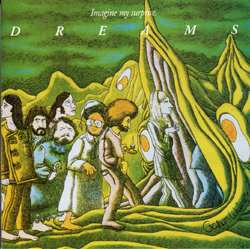 Now, how the horn section of Randy Brecker, Michael Brecker, and Barry Rogers became involved? Honestly, I can't recall. But, after a recent exchange of messages with my dear friend, drummer, Billy Cobham, he told me that Barry Rogers actually invited him to join the group. And so, there they all were! And, when their first album was recorded in 1970, John Abercrombie was added on lead guitar. So, that was a pretty formidable line-up, wouldn't you say? Now, how the horn section of Randy Brecker, Michael Brecker, and Barry Rogers became involved? Honestly, I can't recall. But, after a recent exchange of messages with my dear friend, drummer, Billy Cobham, he told me that Barry Rogers actually invited him to join the group. And so, there they all were! And, when their first album was recorded in 1970, John Abercrombie was added on lead guitar. So, that was a pretty formidable line-up, wouldn't you say?As time went on, as it is with all groups, some friction developed, and, of all things, I suppose it could be said that there was an internal "coup" of sorts, and Jeff and Doug were ousted from the band. Rather strange, considering that their songs made-up the core of the group's material. And so, in 1972, as the 2nd album was rapidly approaching, with the legendary Steve Cropper to produce, new band members appeared. Once again, you will see some very familiar names to this 'family' of players: Don Grolnick(keys), Bob Mann(guitar) and a very young and new to New York, Will Lee(el. bass & vocals). If you look at the fantastic Gahan Wilson cover drawing for "IMAGINE MY SURPRISE," you will see all of the band members, new and old, in caricature with one figure already half-entered into the mouth of the 'monster.' That was supposed to be the figure of Billy Cobham, who decided to leave the band, and join forces with the Mahavishnu Orchestra. In truth, conspiracy theories aside, that departure really spelled "d-o-o-m" for the group. I remember that they auditioned practically every available drummer in New York, and when that search was exhausted, they even flew in some well-known drummers from other parts of the country. In the end, they were never truly happy with anyone after Billy had left. His particular talents and feel were just too hard to replace. And so, this became their last recording. Going back, way back, some 50+ years now, I had always loved both Bob Mann's guitar solo and Randy Brecker's muted trumpet solo on Randy's amazing tune, the title song of the album, "Imagine My Surprise" - and the piece was full of surprises. 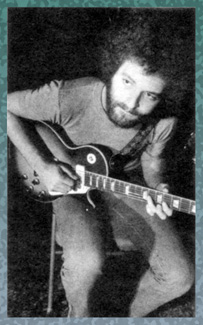 I'm not even sure why, at this moment in time, I decided to sit down and transcribe Bob's solo, but I did. The first great realization for me was that it was only 16 bars in length, and that there were actually more than the 2 chord changes that I had always remembered. The solo format for Bob's solo is that there are basically 2 8-bar units with the same sequence of chords. Harmonically speaking, this solo is accompanied by Don Grolnick's wah-wah clavinet playing a particular movement very common to blues tunes of a certain type. It could easily make one think that it's all Gm7, but that's really far from the truth. In bar 3, Will Lee's bass note changes to Bb and the chord becomes a Bbmajor w/ a #4 (because of the passing of that E-natural). Then, in bar 5, the bass note moves down to A-natural, with the same movement above it, but that changes the modal feeling to what I would describe as A Phrygian. Finally, the little section lands on a lush Db/Eb sonority, which is really just a form of Eb7 with the lush color tones of the 9th and sus4 added in. As I listened to Bob's solo end, in a most musical way, and transition right into Randy's 16-bar solo, I just felt that I might as well transcribe Randy's solo too. As it was 16 bars too, it didn't feel like it was going to be that impossible to do. And? Here we are! It was NOT easy! I'm not even sure why, at this moment in time, I decided to sit down and transcribe Bob's solo, but I did. The first great realization for me was that it was only 16 bars in length, and that there were actually more than the 2 chord changes that I had always remembered. The solo format for Bob's solo is that there are basically 2 8-bar units with the same sequence of chords. Harmonically speaking, this solo is accompanied by Don Grolnick's wah-wah clavinet playing a particular movement very common to blues tunes of a certain type. It could easily make one think that it's all Gm7, but that's really far from the truth. In bar 3, Will Lee's bass note changes to Bb and the chord becomes a Bbmajor w/ a #4 (because of the passing of that E-natural). Then, in bar 5, the bass note moves down to A-natural, with the same movement above it, but that changes the modal feeling to what I would describe as A Phrygian. Finally, the little section lands on a lush Db/Eb sonority, which is really just a form of Eb7 with the lush color tones of the 9th and sus4 added in. As I listened to Bob's solo end, in a most musical way, and transition right into Randy's 16-bar solo, I just felt that I might as well transcribe Randy's solo too. As it was 16 bars too, it didn't feel like it was going to be that impossible to do. And? Here we are! It was NOT easy!People often forget that the guitar is a transposing instrument, and we are always written one octave above where the notes would actually sound on a keyboard. So this is the register in which Bob's solo appears. As the trumpet is a Bb instrument, meaning that it is always written a whole-step above where it actually sounds, it presented a problem as to just how I should handle that in a single transcription. If I had written out what Randy played where it appears on the guitar, there would have been a lot of leger lines above the staff, and I did not like the way that that was going to look. So, I decided to keep everything in concert key, but I wrote what Randy played out an octave lower than it would be on the guitar. So, IF you were going to play along, you would have to take it up an octave from what you now see. Another important aspect to this transcription is that the song was performed with Billy Cobham playing brushes - a rare thing within a "Rock" band - but, with this configuration of stellar musicians, anything would have been possible. So, in essence, you have a feel that is somewhere between a Blues/Rock shuffle and Jazz. In order to write this out without going crazy about all the subtle divisions of time, what we usually do is to make an indication at the top saying that: 2 8th-notes are going to equal the outer notes of a triplet figure. 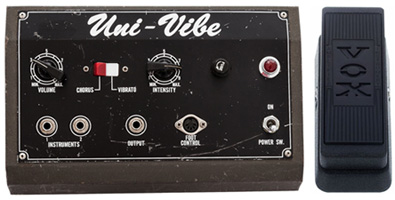 In doing so, when you see 2 8th-notes in Bob's phrases, the 2nd 8th-note is just a bit behind where it might be if we were playing even 8th-notes. That detail should help you if and when you are reading along. In doing so, when you see 2 8th-notes in Bob's phrases, the 2nd 8th-note is just a bit behind where it might be if we were playing even 8th-notes. That detail should help you if and when you are reading along.Though I could easily be wrong about this, from the sound of Bob's guitar, I believe that he was playing that same Gibson Les Paul that you see him pictured with on this page. The tone has more body to it than if it had been a Fender. Also, the guitar was run through a couple of effects, one obviously being a Vox Wah-Wah pedal from that time period, and the other effect sounds like the wonderful Uni-Vibe which is/was a great vintage effect - used to perfection here by Bob. Bob's solo begins with a nice breath of space, allowing the groove to introduce itself. Then, on beat 4, he introduces a line based upon G minor pentatonic [G, Bb, C, D, F] which will actually carry him through for most of the solo. That high F-natural, on which the solo begins, is actually the highest note that Bob will play. Even as the chord changes at bar 3 to Bbmaj(#4), this one pentatonic covers everything and maintains a bluesy feeling. The first actual blue note, a Db, that we hear/see is on the last 8th-note of bar 4. All of his phrases have a distinct triplet feel to them. As the chord has changed again in bar 5 to Bb/A which could be seen as A Phrygian, but that mode contains the same notes as G Dorian [G, A, Bb, C, D, E, F]. So notice that in bar 5, Bob plays right down an A minor triad: A-E-C-A in quarter-notes, and all of those notes are within the mode. From there, at bar 7-8, the big refreshing chord change is to Db/Eb, which is really an Eb7(9sus) sonority, as mentioned previously, where we would expect to hear, in my way of thinking, Bb Dorian [Bb, C, Db, Eb, F, G, Ab]. Here Bob's execution of a string of triplets is simply flawless, perfect. He reveals his true Jazz background by adding in an A-natural within the triplet on beat 3 of bar 7. And, on beat 4 of that same bar there is the skillful and effortless usage of chromaticism: C-C#-D to land on Eb before descending in 4-note groupings over the triplets. Though you might barely notice it, Bob's inclusion of the ghosted open D-string is again something that a Jazz player might employ for feel, because it lends a certain swing to the phrasing, and that is crucial. A small touch, but it performs a huge function. Finally, in bar 8, he plays an Ab to complete having used the full modal palette. This completes the 1st 8 bars of the solo. Coming out of all of those triplets in bar 8, bar 9 arrives and he lands on a nice A-natural, the 9th of G Dorian [G, A, Bb, C, D, E, F], which becomes one of those "pretty" notes. However, as he continues, he brings things right back to the minor pentatonic and the general bluesy feeling that he has created. In bar 11, he repeats the little double-stops that first appeared in bar 3, this is really a nod to R&B and blues playing as well. Some might say that it echoes Curtis Mayfield or Jimi Hendrix. As the Db/Eb chord is approaching for bars 15-16, he is transitioning to that chord change during bar 14. This is another very common Jazz approach to improvising and provides a flow, a linear continuity when playing through changes. It prevents a solo from sounding like you are just playing in little harmonic boxes, which is something you would not want. The closing phrase, again executed in triplets to perfection puts to use a rhythmic subdivision while using our Db blue note again, sometimes it is bent up to, or slurred into. Notice how master drummer Billy Cobham picks right up on that. Bob's solo comes to its conclusion by holding out the note Bb as Randy Brecker's muted trumpet solo begins. Randy Brecker's wonderful muted trumpet solo, in one sense, picks up on the harmonic language used by Bob Mann by employing the notes from that same G minor pentatonic. Here, however, though still within the world of triplets, the emphasis is very different. In bars 3-4, there is, to me, some classic Randy Brecker linear magic. Yes, the chord has changed to Bbmaj(#4), and I am asking you to remember that G Dorian and Bb Lydian [Bb, C, D, E, F, G, A] have exactly the same notes. For the 1st 2 beats of bar 3, Randy plays consonant notes within that mode, Bb-C-D, 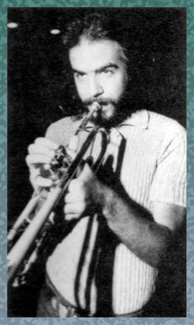 but then, on the and-of-beat 3, suddenly he introduces a grouping of 3 notes where the last two are completely outside the indicated tonality, D-B-natural-C#. Then in bar 4, he answers the previous phrase, again using B-natural and C#/Db, but this time, the little 3-note phrase on beat 3 has moved down and you hear Db-Ab-Bb. Two of those notes are outside of Bb Lydian. Rhythmically speaking, Randy has now darted away from the triplets, and is beautifully in a world of double-time 16th notes. This is a huge change from everything that we had heard to this point. I remember the first I heard this back in 1972, it just seemed so right, so natural to me, to my ears. I wanted to understand what it was. But sometimes, a theoretical explanation doesn't do justice to the ingenious nature of what a great player hears. And Randy's self-confidence, his sense of time and phrasing, and his sense of humor is all shining through. To me, that's part of what makes it sound so good. The key is that you have believe yourself that you hear things this way. Otherwise? What you play is going to sound forced - and that makes such things stick out in a bad way. In bar 5, the Bb/A sonority arrives again - and just to restate it, based upon the root that Will Lee is playing, A-natural, the mode would be A Phrygian [A, Bb, C, D, E, F]. The notes remain exactly the same as G Dorian. The 16th-notes begin to flow with ease and on beats 2-3 with Randy playing G-A-Bb, he still within the modal parameters indicated. However, when the B-natural appears, he is ascending via the Whole-Tone Scale [B, Db, Eb, F, G, A]. I'm not sure which note I would chose as the "root" of that scale, unless I looked at it as a b5 sub of G, meaning Db. But that might just be getting way too cerebral. On beat 2 of bar 6, he descends again using the modal tones until, on beat 4, he introduces notes from Bb Dorian anticipating the arrival of Db/Eb. In bar 7, you hear modal tones and also elements of Bb minor pentatonic [Bb, Db, Eb, F, Ab], especially on beats 2-3. On the last 16th note of bar 7, he puts to use the very syncopated 16th-note subdivisions, leaning into them. The eventual A-natural at the end of beat 3 is really part of the anticipation of the structure turning around and arriving back at Gm7 with A-natural(9th) on beat 1 of bar 9. but then, on the and-of-beat 3, suddenly he introduces a grouping of 3 notes where the last two are completely outside the indicated tonality, D-B-natural-C#. Then in bar 4, he answers the previous phrase, again using B-natural and C#/Db, but this time, the little 3-note phrase on beat 3 has moved down and you hear Db-Ab-Bb. Two of those notes are outside of Bb Lydian. Rhythmically speaking, Randy has now darted away from the triplets, and is beautifully in a world of double-time 16th notes. This is a huge change from everything that we had heard to this point. I remember the first I heard this back in 1972, it just seemed so right, so natural to me, to my ears. I wanted to understand what it was. But sometimes, a theoretical explanation doesn't do justice to the ingenious nature of what a great player hears. And Randy's self-confidence, his sense of time and phrasing, and his sense of humor is all shining through. To me, that's part of what makes it sound so good. The key is that you have believe yourself that you hear things this way. Otherwise? What you play is going to sound forced - and that makes such things stick out in a bad way. In bar 5, the Bb/A sonority arrives again - and just to restate it, based upon the root that Will Lee is playing, A-natural, the mode would be A Phrygian [A, Bb, C, D, E, F]. The notes remain exactly the same as G Dorian. The 16th-notes begin to flow with ease and on beats 2-3 with Randy playing G-A-Bb, he still within the modal parameters indicated. However, when the B-natural appears, he is ascending via the Whole-Tone Scale [B, Db, Eb, F, G, A]. I'm not sure which note I would chose as the "root" of that scale, unless I looked at it as a b5 sub of G, meaning Db. But that might just be getting way too cerebral. On beat 2 of bar 6, he descends again using the modal tones until, on beat 4, he introduces notes from Bb Dorian anticipating the arrival of Db/Eb. In bar 7, you hear modal tones and also elements of Bb minor pentatonic [Bb, Db, Eb, F, Ab], especially on beats 2-3. On the last 16th note of bar 7, he puts to use the very syncopated 16th-note subdivisions, leaning into them. The eventual A-natural at the end of beat 3 is really part of the anticipation of the structure turning around and arriving back at Gm7 with A-natural(9th) on beat 1 of bar 9.For this 2nd half of a "chorus" Randy transforms himself into his more lyrical side playing beautiful melodic phrases with a behind the beat sensibility to all of it. While listening, you can almost feel that there is no sense of chromaticism, not even a chromatic neighboring tone. All the notes stay within G Dorian, or its related modes that we have discussed earlier. There is one very nice Jazzy mannerism on beat 2 of bar 10, notice the 16th-note triplet grouping. This is a very common phrasing device, and if you investigated the Charlie Parker Omnibook, you would see this device practically everywhere. It should always sound like a part of your musical speech, something that you "say" daily, hourly - it's just there, nothing that you have to try to hard to insert. Bars 11-12 offer a musical answer to what Randy played in bars 9-10 - beautifully done. At bar 13, Randy begins a series of flowing quarter-note triplets across the bars leading him to the first appearance of an Ebmaj9/6 chord where he is now employing the Eb Lydian Mode [Eb, F, G, A, Bb, C, D]. The important note here is the A-natural (#4) which really appears more as a neighboring tone rather than a note that Randy is placing great emphasis upon. As this great solo ends, on the actual recording, Randy's lead vocals return - if you are not familiar with Randy's stylings, I suppose one could say that he sounds somewhere akin to Bob Dorough or Mose Allison? For the purposes of this presentation, now with solos from both Bob Mann and Randy Brecker, I tried to make the soundclip something that would take the listener closer to the amazing Outro, or the Fade. As Randy must have written on the back cover of the LP, he says: "...the ending of Imagine My Surprise was a complete surprise to us!" And, if you are following it along, you will see how very extraordinary it is. There is some fantastic and wild scatting by Randy, which contributes to a conversational dialog with Bob Mann. This is then joined by the killer horn section of Randy, Mike and Barry Rogers. At 1:32 on the soundclip, the horns play a fantastic series of clustered figures with some quarter-note triplets super laid back against the flow of the time. The soundclip does not really extend far enough to include where Billy Cobham goes to a double-time samba feel - and then, suddenly, as if by magic? Randy Brecker breaks into some Jazz Poetry. The cosmic interplay/accompaniment between Don, Bob, Will and Billy is just spectacular! This great, great moment during the full 8:01 version of "Imagine My Surprise" appears @ the 6:05 mark, which you can now access via the BLUE BUTTON above. I recall that when I heard it for the first time, I was laughing so hard that I actually had tears in my eyes. It was just too much, it still is. A couple of summers ago, Randy and I exchanged e-mails about this very poem, because there had been one word that I couldn't really understand, and he shared with me that it was actually a mistake that he had said the word "through" and then quickly said the correct word of "full" in the 3rd line of the last stanza. A fun bit of trivia for you all. - cried the virgin queen as she stroked a black leopard 'neath a sky of green Nearby, wilting flowers wept tears of honey as they flowed down funny through paths lined with play money and gold..... Across the river lay a twisted quiver full of broken arrows and old chopped liver.... For the longest time here in New York City, guitarist Bob Mann played an extremely important role drifting in and out of the worlds of Jazz, Rock, R&B, and Pop music. Allow me to just point to a few of Bob's associations that I remember. In 1970, he was part of Chico Hamilton's recording, "EL EXIGENTE"(The Demanding One)(Flying Dutchman). 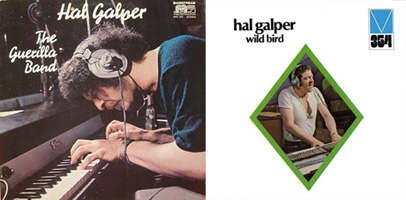 There was the album with Astrud Gilberto and Stanley Turrentine, "GILBERTO with TURRENTINE"(CTI)(1971). Then, of all things, he was part of an incarnation of "MOUNTAIN" w/ Leslie West in 1973 that led to the album, "TWIN PEAKS(LIVE)"(Columbia). But, I would point to the two albums that he made with keyboardist/composer Hal Galper in 1971-1972, both "THE GUERILLA BAND" and "WILD BIRD" for Mainstream Records. The core group alongside Hal, featured both Randy and Michael Brecker, Bob Mann, and Victor Gaskin (El. Bass). Each album featured two drummers, but there were different pairings for each album. On the "THE GUERILLA BAND," it was Don Alias and Steve Haas, and on "WILD BIRD," it was Bill Goodwin and Billy Hart. For me, these monumental albums and the music contained therein offer the most futuristic vision of what Jazz/Fusion could be. The compositions and, above all, the spirit of the playing stand-up right up to this very moment. Sadly, it still remains that many, many people, fans of this music, do not even know about these albums. So, do everything that you can to search and to find them. It will be worth it. Above, I have offered the links for these albums @ Apple Music! There was the album with Astrud Gilberto and Stanley Turrentine, "GILBERTO with TURRENTINE"(CTI)(1971). Then, of all things, he was part of an incarnation of "MOUNTAIN" w/ Leslie West in 1973 that led to the album, "TWIN PEAKS(LIVE)"(Columbia). But, I would point to the two albums that he made with keyboardist/composer Hal Galper in 1971-1972, both "THE GUERILLA BAND" and "WILD BIRD" for Mainstream Records. The core group alongside Hal, featured both Randy and Michael Brecker, Bob Mann, and Victor Gaskin (El. Bass). Each album featured two drummers, but there were different pairings for each album. On the "THE GUERILLA BAND," it was Don Alias and Steve Haas, and on "WILD BIRD," it was Bill Goodwin and Billy Hart. For me, these monumental albums and the music contained therein offer the most futuristic vision of what Jazz/Fusion could be. The compositions and, above all, the spirit of the playing stand-up right up to this very moment. Sadly, it still remains that many, many people, fans of this music, do not even know about these albums. So, do everything that you can to search and to find them. It will be worth it. Above, I have offered the links for these albums @ Apple Music!Many of you will remember seeing and having heard Bob Mann for a number of years and tours with James Taylor and Linda Ronstadt, both gigs he shared those stages with his close musical associate, 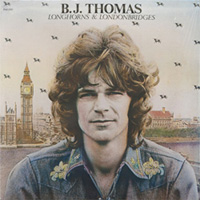 Don Grolnick, who absolutely loved Bob's playing and musicality on every level. But, those great moments aside, I feel that I must point to one particular track and performance by Bob that appeared on a B.J. Thomas album from a 1974 album, "LONGHORNS AND LONDONBRIDGES"(Paramount) which was produced by one of my dearest friends and favorite people, Al Gorgoni alongside Steve Tyrell. The song that I am referring to was "I'm Callin'" which was written by Randall Bramblett. Bob's performance captures everything that is and was wonderful about a particular style of guitar playing here in New York during those years. It embodies the best elements of R&B, blues, soul and some country as well. What was always remarkable to me is that the exact same track appeared on Randall Bramblett's own album, "THAT OTHER MILE"(Polydor)(1975). I think that one would have to be pretty industrious to locate that album and that version of "I'm Callin'." I have to now admit that I searched high & low for this particular B.J. Thomas album and could not find it at Amazon, nor at Apple Music, nor at Spotify. Maybe some of you will have better luck than me? I'm going to hope so. Don Grolnick, who absolutely loved Bob's playing and musicality on every level. But, those great moments aside, I feel that I must point to one particular track and performance by Bob that appeared on a B.J. Thomas album from a 1974 album, "LONGHORNS AND LONDONBRIDGES"(Paramount) which was produced by one of my dearest friends and favorite people, Al Gorgoni alongside Steve Tyrell. The song that I am referring to was "I'm Callin'" which was written by Randall Bramblett. Bob's performance captures everything that is and was wonderful about a particular style of guitar playing here in New York during those years. It embodies the best elements of R&B, blues, soul and some country as well. What was always remarkable to me is that the exact same track appeared on Randall Bramblett's own album, "THAT OTHER MILE"(Polydor)(1975). I think that one would have to be pretty industrious to locate that album and that version of "I'm Callin'." I have to now admit that I searched high & low for this particular B.J. Thomas album and could not find it at Amazon, nor at Apple Music, nor at Spotify. Maybe some of you will have better luck than me? I'm going to hope so. I felt that it was essential while offering this salute to guitarist Bob Mann that I must mention his signature contributions to the groundbreaking album from 1975 on Arista, The BRECKER BROS.. 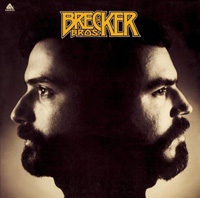 With his contributions and performances, Bob set the standard for the kind of excellence that would be necessary on future Brecker Bros. albums. Once again, his execution of the demanding charts by Randy was as good as it gets. It is a testament to the music on this album that it is still influencing generations of young musicians and being interpreted and re-interpreted by countless orchestras across the globe. There just are not that many albums that possess this kind of staying power. It also should be noted that one of Randy's vocal tunes with lyrics and everything also appeared on this album, "Oh My Stars" So certain parts of Randy's talents and modes of expression have continued right up to the present. With his contributions and performances, Bob set the standard for the kind of excellence that would be necessary on future Brecker Bros. albums. Once again, his execution of the demanding charts by Randy was as good as it gets. It is a testament to the music on this album that it is still influencing generations of young musicians and being interpreted and re-interpreted by countless orchestras across the globe. There just are not that many albums that possess this kind of staying power. It also should be noted that one of Randy's vocal tunes with lyrics and everything also appeared on this album, "Oh My Stars" So certain parts of Randy's talents and modes of expression have continued right up to the present.As I previously mentioned, the original cover art for "IMAGINE MY SURPRISE" was done by the wonderful Gahan Wilson, who sadly passed away in November of 2019. Many of you should be familiar with his ghoulish work and style through his monthly cartoons for "PLAYBOY" magazine. I have a book of these cartoons, and they're still hysterically funny to me. If you are wondering who's who in this drawing, I'll identify the guys for you, from left to right: Michael Brecker, Randy Brecker, and Barry Rogers. Then, just below Barry, is Don Grolnick, dressed as a friar!!! Finally, you have Eddie Vernon, Bob Mann, and Will Lee. I can't stop laughing at how much Don hated how he was portrayed in this drawing! Perhaps Don did not want to be cast in the role of "Friar Tuck" in a future production of "ROBIN HOOD"? Oh, one other funny story about this 2nd Dreams album. When I first arrived here in New York City, the once weekly VILLAGE VOICE was the center of liberal thought and expression. If one's album could get a review in that publication, along with the NEW YORK TIMES Sunday edition, it could signal great things for that album. As it turned out, Robert Christgau was one of the most respected music writers during those years. The usual style of a VOICE review would include some text about the recording and then, a letter grade - like school, years 1 through 12. Mr. Christgau's review of "IMAGINE MY SURPRISE" consisted of a single word, and then, the dreaded grade. If memory serves, it went something like this: Dreams, "IMAGINE MY SURPRISE" - "BULLSHIT! D+. Needless to say, Don Grolnick was so furious about this kind of treatment, and he NEVER ever forgot that review, or the name of the writer. Periodically in conversation about such things, it would come up. As we have barely begun the new year of 2023, and, as it turns out, I am posting on February 14th, I just wanted to wish you all good health, happiness, and the usual plea for PEACE everywhere!!!
[Photos of Bob Mann and Randy Brecker by Raymond Ross 1971
|